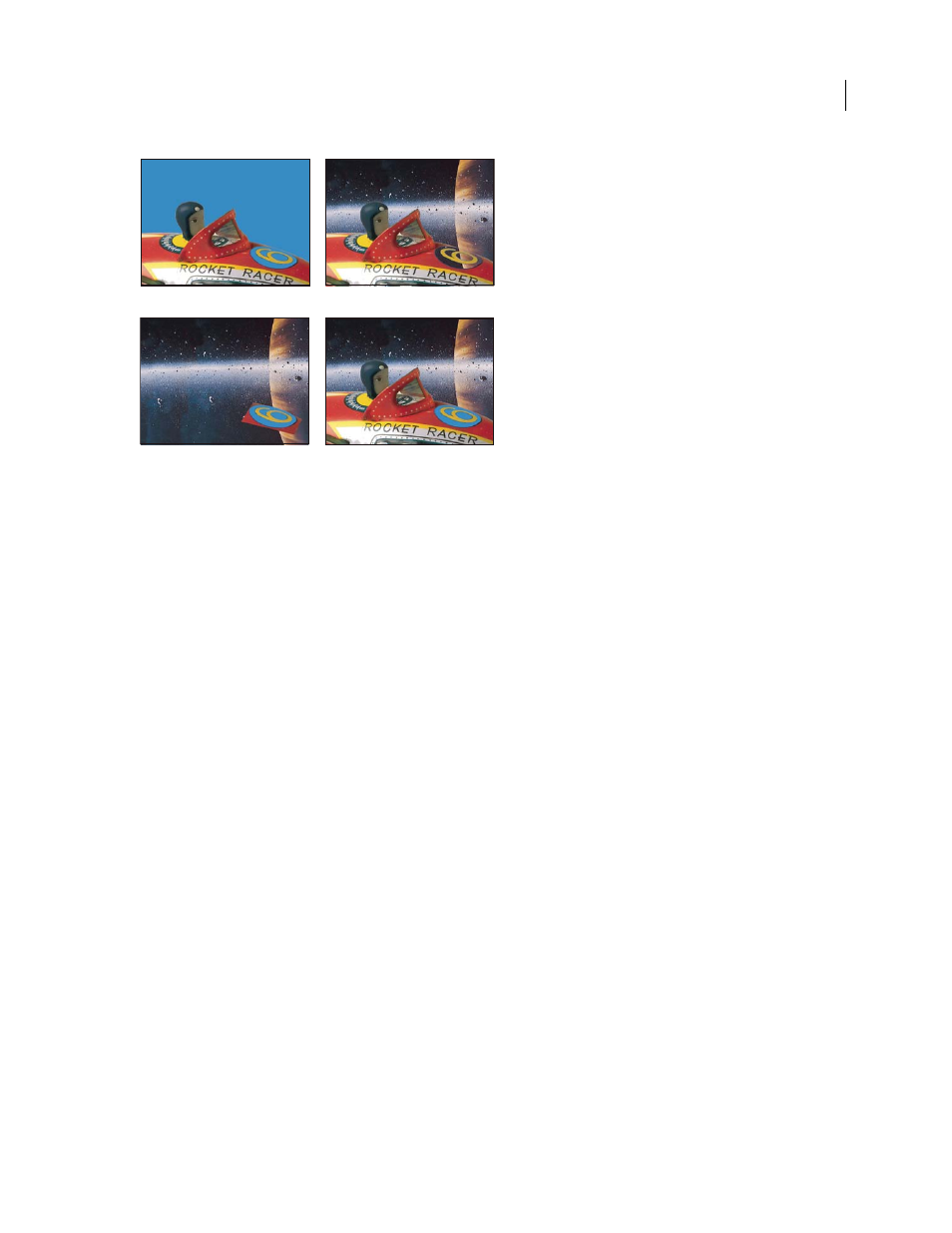Close a hole in a matte – Adobe After Effects CS3 User Manual
Page 276

AFTER EFFECTS CS3
User Guide
271
Example of using a hold-out matte
A. Original bluescreen image. The number’s background is also blue. B. After keying, the number’s background is also transparent. C. Hold-
out matte containing the part of the image you want to remain opaque
D. When the hold-out matte is placed on top of the keyed image, the
number’s background is now opaque.
1
Duplicate the layer containing the color screen.
Note: Don’t change Transform properties of only one of the layers after making the duplicate; keep the layers moving
together.
2
Apply keying effects and Matte effects to the original layer to create transparency.
3
On the duplicate layer, create masks to mask out everything in the image except the area that you want to preserve.
4
Make sure that the copy (the hold-out matte) is positioned directly on top of the keyed layer and contains exactly
the same keyframes with the same values. Then render the movie.
See also
“Creating and importing masks” on page 254
“Keying overview and tips” on page 268
Close a hole in a matte
The sequence of choking and spreading occurs in two stages, each with its own set of identical controls. Typically,
stage two does the opposite of stage one. After a specified number of back-and-forth adjustments (which are handled
automatically by Matte Choker), the hole is filled and the matte shape is preserved.
1
Select the layer, and choose Effect > Matte > Matte Choker.
2
Set stage-one controls (the first three properties) to spread the matte as far as possible without altering its shape,
as follows:
Geometric Softness
Specifies (in pixels) the largest spread or choke.
Choke
Sets the amount of choke. Negative values spread the matte; positive values choke it.
A
B
C
D
